Assassin’s Creed III: Liberation Review
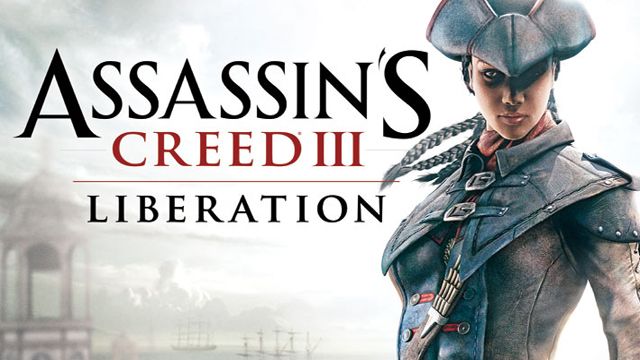
The Assassin’s Creed series provides gamers with an interesting dichotomy… on the one hand it offers unique platforming and enjoyable combat while at the same time penning a clever narrative that has endless possibilities in the realm of “alternate history,” a genre that has taken on a life all its own. As something of a history buff, I love the fact that it gives the player the chance to explore the living past despite going off the rails with the core concept. While many people are curious to see how Desmond’s tale expands into the New World with Conner in Assassin’s Creed III after so long in Rome, PlayStation Vita owners are given the chance to take the experience on the go with Assassin’s Creed III: Liberation. For the most part it plays astonishingly like its console brethren. Sadly however, it falls short in a few crucial areas, thus dampening the overall experience.
Liberation takes you to a new locale with a new hero, or heroine in this case. Aveline is an interesting, compelling protagonist in the sense of who she is: an affluent woman of mixed race in a time when that simply wasn’t commonplace. The fact that she is a trained assassin seems a bit moot considering what she was up against. She is constantly underestimated, which serves to her advantage. The narrative leads from the richest places in New Orleans to the veritable slums that slaves were forced to live in, and deep into the bayou where it is survival of the fittest.
Sadly, her motivations and back-story are never really expanded upon. Why did she join the Brotherhood in the first place? There are hints as to her past that are revealed through gameplay and hidden diary pages, however there is no “Desmond” to connect her to the overall arc of the greater narrative. It’s disappointing because there are a lot of unanswered questions… important, key questions that are never really addressed.
Aveline can don disguises, playing different roles in these dynamic communities that allow more variation in infiltration. These different “personas” are an interesting idea and I see what they were trying to do. Sadly, in practice, each is surprisingly limiting. The standard assassin guise can do everything: free running, use all available weapons, essentially everything we have grown used to with the series. The downside is that your notoriety builds more quickly if you are spotted. Also, to lower that level you have to find people to bribe and they are surprisingly hard to find. The slave persona is interesting. In this disguise, Aveline can move like the assassin but can’t hold the same weapons. As an unassuming slave, she can blend easily into crowds. This is an advantage although I rarely used it, instead preferring to stick to the rooftops. To get down her notoriety you have to pull down posters, a mechanic long time fans should be familiar with.
The lady persona is the most intriguing. She cannot only charm people to fight for her, but also has some clever hidden weapons like the umbrella dart gun. Unfortunately, she is also the most frustrating to play with simply because she can’t climb anything; that and she stands out like a sore thumb. Small gangs will try to grab and take advantage of her if you pass too close. So, if a group of guys try to rape you and you put your assassin skills to use, then it’s difficult to disappear seeing as she can’t run very fast and can’t escape vertically. As her notoriety goes up, then every time she passes a guard it’s a battle that she is woefully underpowered to deal with. To lower her notoriety you have to take out witnesses who are flanked by a pair of thugs. Again, it’s difficult to do this and then get away with it. It’s a very clever idea, but just didn’t work that well in practice.
Combat is essentially the same as it has been in the other entries. Using ranged weapons helps from distance, but can quickly draw attention. When it comes to sword-on-sword (or hatchet, blade etc.), Aveline tends to fight better offensively rather than just relying on counters. The new “chain-kill” ability is interesting but not terribly convenient because you have to use the touch screen to mark your targets. To tell the truth, I forgot about it most of the time. It’s a pity that you have to rely on this Vita-specific mechanic, but it is a fun idea that could make an appearance in future console versions.
Aveline has some interesting new toys to play with. I love the blowgun – it’s a great new weapon for silent assassinations. The whip is another interesting tool. It can be used as a mid-ranged weapon to pull people towards her, thus allowing for quick dispatching. Also, the whip can be used as a tool to swing between two points like Indiana Jones. It’s clever how these period specific devices (the whip having a rather infamous reputation considering the locale and time) are made into viable weapons.
Navigating the environment works as well as you’d expect. I daresay it’s better than the first two console releases. Aveline moves through both city and country flawlessly, and the animations rarely look inappropriate. I especially love platforming in the sections that take place in the bayou. It’s a unique, fun new environment to explore. There are some ingeniously designed platforming sections involving running through the treetops over the swamps. There is nothing like synching fully over a massive forest from the top of a reallllllly tall tree.
Pickpocketing is hard to pull off because it relies on the back touchscreen in combination with targeting on the front touch screen. In the end I gave it up all together (which is a shame because we all know it’s a source of quick cash) simply because the implementation was clumsy. Optional missions, another staple of the series, are cleverly implemented. You can help out people in a variety of ways, and most of the usual styles of quest are available, but the real moneymaker is working on expanding your father’s shipping business.
Ezio’s adventures in Rome revolved a lot around making money, but it always sort of felt uninspired to me. You’d end up with a mountain of money that you couldn’t get rid of, all the while more and more came in. In Liberation, things are far more involved. It’s actually well implemented and surprisingly addictive… at first. The short version is you control ships at port, what cargo they take on, then where they go, braving storms and pirates on the way to deliver the goods. This happens in “real-time,” then you unload at a profit and take on new goods that will fetch a good price at another port in the Caribbean. But just like these mechanics in the rest the series, the novelty wears off quickly because you can only access the game at a few choice locations. Ultimately, what was initially fun eventually becomes something of a chore.
Liberation is the first Assassin’s Creed game on the Vita – in truth it’s one of the first games to truly test the power of the system. And while the game looks pretty good and the core gameplay surprisingly accurate to previous entries in the series, I’m not sure if they really figured out how to best make use of the Vita’s unique abilities. The Vita functionality is tacked on at best and to be honest, I could have done without it entirely. Things like swiping the front and back screens together to open letters is all well and good, but it’s a gimmick, nothing more. The worst idea was holding the camera up to the light to read hidden messages. It was an overly complex process, and I swear it simply didn’t work half the time. I went all over the house trying to find the right level of light. It was beyond annoying, but what’s worse is it totally removed me from the experience.
The animations aren’t as smooth as they are on the console brethren, but overall I was impressed with the graphical prowess the Vita managed to pump out. The camera can be a bit wonky at times and there are some frame rate issues, but honestly I don’t think that is at all surprising. The soundtrack is well done and the voice acting is pretty good, but the lip-syncing isn’t as spot on as we are used to. Lastly, the game did lock up on me completely a couple of times. Fortunately the game auto-saves fairly frequently, and because of the depth of graphical detail I wasn’t terribly surprised, but it’s still worth mentioning.
What is genuinely surprising and impressive is that Assassin’s Creed III: Liberation really feels like a proper Assassin’s Creed game, and may even play better than the original. The platforming and free running feel impressively smooth, and combat is as fun as ever, even if it’s not as finely-tuned as more recent console entries. For me, the biggest problem with Liberation is the story; it felt underdeveloped and stands as a missed opportunity. Despite that shortcoming, and a few technical issues aside, I really enjoyed being able to take what is essentially a full-fledged Assassin’s Creed game on the road with me. While not essential to the canon, this game is worth playing for anyone who is a fan of the series.
Reviewed By: Simon Waldron
Publisher: Ubisoft
Rating: 81%
——————————————————————————–
This review is based on a digital copy of Assassin’s Creed III: Liberation for the PlayStation Vita provided by Ubisoft.
 Game Over Online
Game Over Online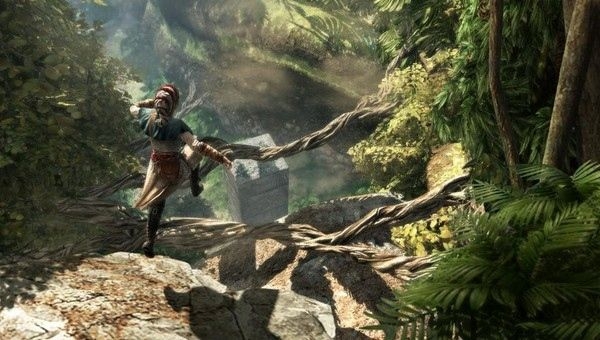
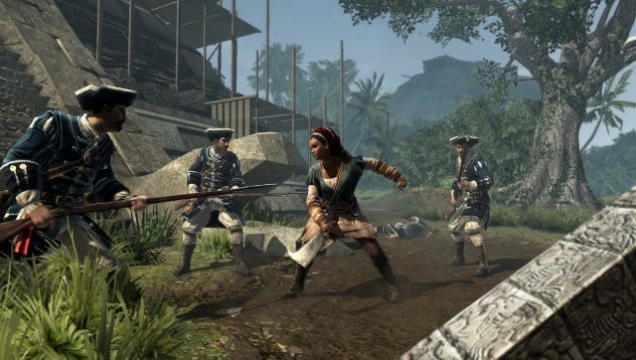
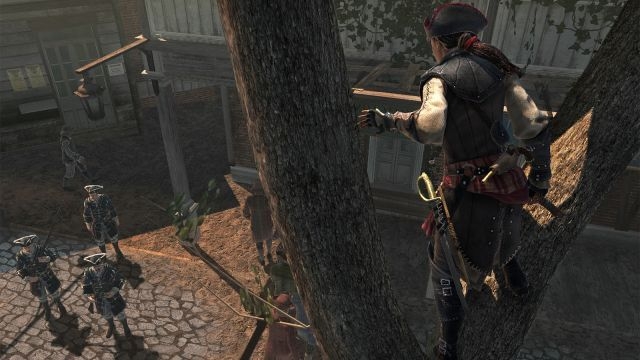
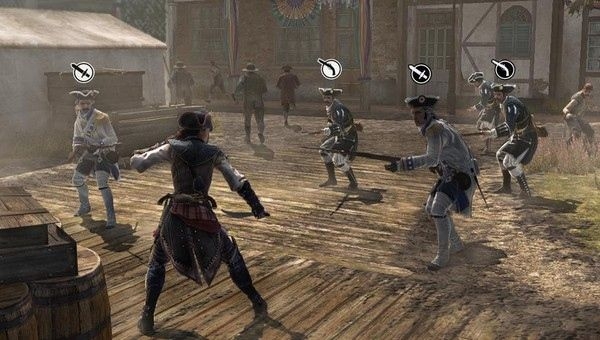








Was looking for a good review on the game, after hearing some good stories about the game, it seems you confirm it by giving Assassin’s Creed III a whoppin’ 81%. As I can tell from the screenshots the graphics look really good, hope the frame rate issues are not that bad.